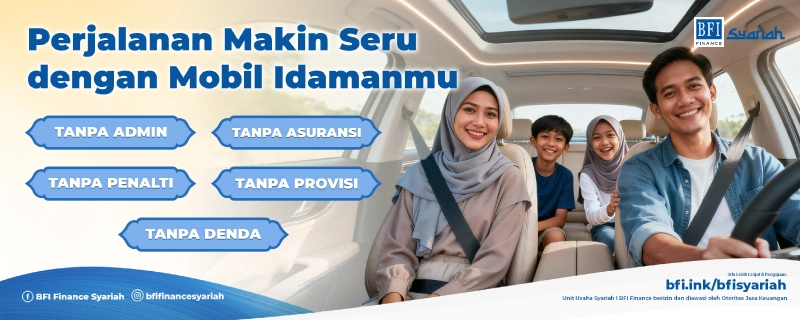Managing finances is not an easy task in daily life. Everyone has experienced the pressure and stress of managing finances to meet ever-increasing financial needs. Some people don't even have the opportunity to save due to a lack of understanding of how to manage their finances well. However, a new saving trend recently emerged among Generation Z, known as soft saving. Soft saving can help them reduce financial stress and still meet their financial needs.
If you want to learn more about this Gen Z saving trend and its benefits, read on in the following article!
1. What is Soft Saving?
1.1 Definition of Soft Saving
Soft saving is a concept of saving that offers flexibility and comfort for individuals in managing their finances. With this more flexible and relaxed approach, one does not feel burdened by the obligation to save large amounts each month. Instead, soft saving teaches the importance of balancing saving and spending to keep finances stable. Thus, users can feel more free and controlled in managing their finances.
Moreover, soft saving allows individuals to adjust their savings according to their current financial situation, so they don't have to worry about a lack of funds in the future. In other words, soft saving provides ease for individuals to continue investing in their future without feeling pressured or financially burdened.
1.2 Soft Saving Trends in the Gen Z Era
Soft saving, or saving flexibly and casually, is becoming increasingly popular among Generation Z. This approach allows individuals to adjust their savings according to their current financial situation without burdening themselves. With soft saving, Generation Z can have realistic saving goals, maintain a balance between financial needs and a healthy lifestyle, and reduce financial stress.
Additionally, soft saving helps develop positive saving habits, increases financial awareness, and provides freedom in spending. With all its benefits, it's no wonder that soft saving has become a preferred choice for Generation Z to manage their finances more wisely.
2. Benefits of Soft Saving
By practicing soft saving, one can set realistic saving goals and still lead a healthy lifestyle. This helps reduce the mental pressure often associated with saving and helps maintain motivation to keep saving without feeling burdened. Moreover, soft saving has many benefits, such as:
2.1 Positive Saving Habits
Practicing soft saving can help someone develop positive saving habits. By saving regularly, a person can build strong financial discipline and increase awareness of the importance of managing finances.
2.2 Balancing Financial Needs and a Healthy Lifestyle
Soft saving helps someone maintain a balance between financial needs and lifestyle. Without having to save large amounts every month, one can meet daily needs without sacrificing personal comfort and satisfaction. This helps maintain a healthy lifestyle without adding financial stress. Additionally, soft saving can help avoid a wasteful and impulsive lifestyle.
2.3 Flexibility in Spending
One of the advantages of soft saving is flexibility in spending. One is not tied to a specific saving amount each month. This provides the freedom to adjust spending according to the current financial situation. With this flexibility, one can avoid unnecessary expenses and manage finances better.
2.4 Reducing Financial Stress
Financial stress is often a problem faced by many people. Soft saving can help reduce this stress by providing a sense of security about future finances. With sufficient emergency funds and wise financial management, one can reduce worries about urgent needs and have better peace of mind.
With all these benefits, it's no wonder that soft saving is becoming an increasingly popular trend, especially among Generation Z who want to manage their finances more wisely and reduce financial stress.
Also Read: Here are 10 Daily Saving Tips You Can Implement Now
3. Advantages and Disadvantages of Soft Saving

3.1 Advantages of Soft Saving
- Training Saving Habits
Soft saving helps train saving habits in a more relaxed and flexible manner. Individuals can start with small amounts and gradually increase them, building positive momentum in saving. With this approach, one can feel more confident and disciplined in managing their finances. Additionally, the flexibility in the saving amount makes the saving process easier and can be adjusted to each individual's financial condition.
- Wise Financial Management
Soft saving encourages individuals to manage their finances wisely. Without being tied to a rigid saving amount each month, one can learn to adjust spending according to needs and financial capabilities. This allows for better financial control and avoidance of unnecessary waste. With greater awareness of their spending, individuals can make smarter and more planned financial decisions.
- Reducing Future Financial Burden
By practicing soft saving, one can reduce potential future financial burdens. Having sufficient emergency funds allows individuals to feel more prepared to face unexpected financial needs. Additionally, having an emergency savings fund provides extra financial protection to deal with emergencies or other unforeseen circumstances. Thus, individuals can feel calmer and less stressed when faced with urgent financial issues. Gradually, financial security will be achieved.
- Improving Quality of Life
Soft saving can help improve one's quality of life by providing a sense of financial security and reducing financial-related stress. By planning finances wisely, individuals can focus on important things without being burdened by financial worries. The financial freedom gained through good saving habits can also open doors to achieving dreams and long-term financial goals. Thus, one can have a more stable and financially secure life.
- Creative and Innovative
Soft saving encourages creativity and innovation in managing money to achieve financial goals. By seeking new ways to increase income or manage expenses, one can achieve their financial goals more effectively and efficiently.
3.2 Disadvantages of Soft Saving
- Lack of Emergency and Retirement Funds Preparation
One of the disadvantages of not practicing soft saving is the lack of preparation for emergency and retirement funds. By saving only small or inconsistent amounts, one might not have enough savings to face emergencies or prepare well for retirement.
- Missing Early Investment Opportunities
Not practicing soft saving also means missing opportunities for early investments. By saving small amounts without a clear plan, one might miss opportunities to invest their money more profitably and generate long-term gains.
4. Keys to Effective Soft Saving
To practice soft saving effectively, several key points need to be considered:
4.1 Setting Realistic Goals
One key to practicing soft saving is setting realistic goals. Don't force yourself to save large amounts each month. Start with small amounts and gradually increase them over time to build momentum.
4.2 Not Forcing Yourself
It's important not to force yourself into practicing soft saving. Adjust the saving amount to your current financial capabilities. There's no need to burden yourself with large savings if it negatively impacts your finances.
4.3 Learning Financial Knowledge and Management Methods
To succeed in soft saving, it's important to learn financial knowledge and management methods that suit your needs and financial capabilities. By understanding how to manage finances wisely, it will be easier to practice soft saving effectively.
Sobat BFI, here's what you need to know about Soft Saving. By practicing soft saving, one can reduce future financial burdens, train positive saving habits, and improve their quality of life.
If you need funds, BFI Finance is your answer. BFI Finance is a financing company offering multipurpose loans with collateral such as motor vehicle BPKB, car BPKB, and house or shop certificates for various purposes.






